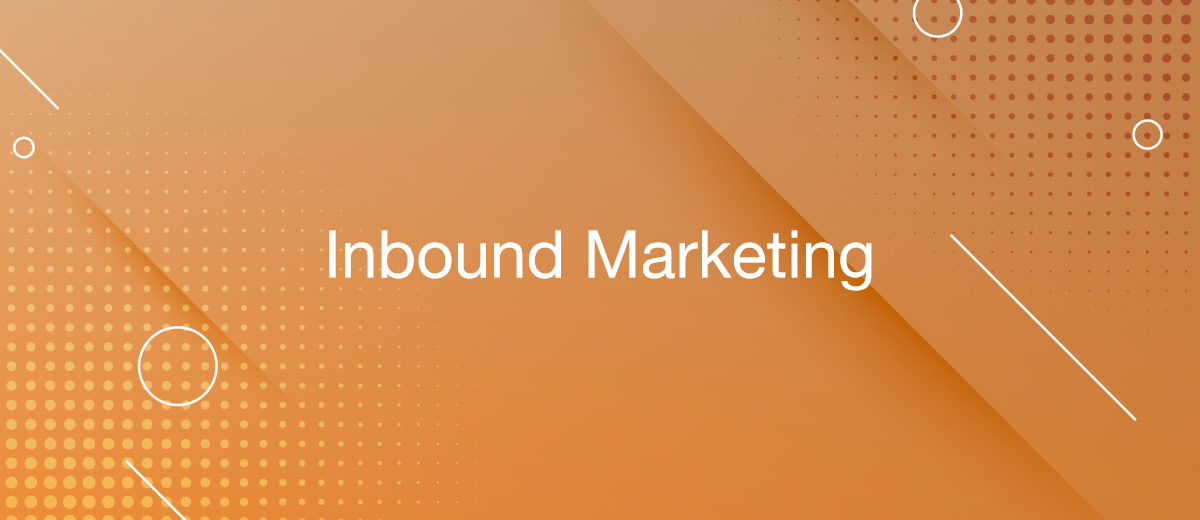What is Inbound Marketing?
In today's digital landscape, inbound marketing has emerged as a transformative strategy for businesses aiming to attract, engage, and delight customers in a way that fosters lasting relationships and enhances brand loyalty. Unlike traditional outbound methods that often interrupt potential customers, inbound marketing draws them in with valuable content and interactions that are timely, relevant, and helpful. This article will help you understand what inbound marketing is and what positive results using this strategy can bring. Whether you're a novice looking to understand the basics or a seasoned marketer seeking to refine your approach, this guide will provide the insights you need to leverage inbound marketing effectively.
Definition of Inbound Marketing
Inbound marketing is a business methodology that attracts customers by creating valuable content and tailored experiences. Below are the fundamental concepts that define inbound marketing:
- Customer-Centric Approach: Focuses on attracting potential customers through relevant and helpful content rather than seeking them out, which aligns with their interests and problems.
- Holistic Methodology: Combines various marketing strategies such as content marketing, SEO, social media marketing, to create a unified user experience.
- Attract Stage: Draws in the right users with high-quality content.
- Engage Stage: Offers solutions that align with their needs and goals.
- Delight Stage: Ensures interactions lead to positive, long-term relationships.
- Content as a Tool: Utilizes content at every stage of the customer's journey to educate and guide them towards informed purchasing decisions.
- Integration with CRM: Relies on customer relationship management (CRM) systems to personalize experiences at scale.
- Data-Driven Decisions: Uses analytics to refine marketing strategies and enhance user engagement based on real-time data insights.
- Long-Term Focus: Aims to build lasting relationships with customers, turning them into repeat buyers and brand advocates.
These principles are the cornerstone of inbound marketing, enabling businesses to effectively attract, engage, and convert customers in today's digital age.
Core Components of Inbound Marketing
Inbound marketing is built around a strategic framework designed to attract, engage, and delight customers. Each component plays a critical role in creating effective marketing strategies.
Here are the core components of inbound marketing:
- Content Creation: Develop informative and engaging content that answers your audience's questions and needs. This can include blogs, videos, ebooks, and infographics.
- SEO (Search Engine Optimization): Optimize your content to ensure it can be found easily on search engines. This involves using the right keywords, creating quality backlinks, and optimizing website pages.
- Social Media Marketing: Use platforms like Facebook, LinkedIn, and Instagram to share content, interact with followers, and increase brand visibility.
- Lead Generation: Implement strategies to convert visitors into leads. This often involves offering something valuable like a free trial, ebook, or webinar in exchange for contact information.
- Lead Nurturing: Develop ongoing relationships with leads through personalized communications tailored to their needs and stage in the buyer's journey.
- Email Marketing: Send targeted, personalized messages to segments of your audience to guide them through the buying process.
- Marketing Automation: Use software to automate repetitive tasks such as email marketing, social media posting, and lead nurturing campaigns, allowing for more efficient scaling of marketing efforts.
- Analytics and Reporting: Monitor and analyze marketing activities to understand what works and what doesn’t. This helps in making data-driven decisions to improve strategies.
By effectively implementing these components, businesses can create a powerful inbound marketing strategy that attracts more prospects, engages them with personalized content, and delights them into becoming loyal customers and promoters of the brand.
Benefits of Inbound Marketing

Inbound marketing offers a range of advantages that can significantly improve business performance by aligning closely with modern consumer behaviors. Here are the key benefits of adopting an inbound marketing strategy:
- Increased Relevance and Engagement: Content tailored to the interests and needs of your target audience increases engagement, keeping potential customers interested and engaged with your brand.
- Cost-Effectiveness: Inbound marketing is often more cost-effective than traditional outbound marketing. By focusing on creating quality content that attracts customers organically, businesses can reduce the need for expensive ad campaigns.
- Higher Quality Leads: By attracting prospects through relevant and helpful content, inbound marketing tends to generate higher quality leads. These leads have already shown interest in your content and brand, making them more likely to convert into sales.
- Improved Brand Visibility and Authority: Regularly publishing helpful and informative content can establish your brand as a leader in your industry. This improves overall brand visibility and credibility.
- Long-Term Relationships: Inbound marketing strategies focus on creating meaningful interactions and providing value over time, fostering long-term relationships with customers that can lead to repeat sales and referrals.
- Integration Across Multiple Channels: Inbound marketing integrates seamlessly across various channels, ensuring a consistent brand message and experience whether the customer is interacting via social media, blogs, or email.
- Enhanced Customer Experience: By providing content that solves problems and enhances customer knowledge, inbound marketing improves the overall customer experience, which is pivotal in today’s customer-centric business environment.
- Data-Driven Insights: The use of advanced analytics in inbound marketing allows businesses to gain deep insights into customer behavior and preferences, enabling more targeted and effective marketing strategies.
- Scalability: As your content library grows, so does your ability to attract new customers. Inbound marketing efforts can be scaled up to support business growth without a corresponding increase in marketing costs.
- Alignment with Buyer's Journey: Inbound marketing strategies are designed to align with the different stages of the buyer's journey, ensuring that the right content is delivered at the right time to move leads down the sales funnel.
These benefits show why inbound marketing is not just effective but essential for businesses looking to thrive in a digital-first world. It not only helps in attracting and engaging customers but also in building a sustainable brand that grows organically over time.
Future of Inbound Marketing
As digital technologies and consumer behaviors continue to evolve, the future of inbound marketing looks poised for significant transformation. Here are some of the anticipated trends and developments that are likely to shape the landscape of inbound marketing in the coming years:
- Increased Use of AI and Machine Learning: Artificial intelligence and machine learning will become more integrated into inbound marketing strategies. These technologies can help personalize content at scale, optimize marketing campaigns in real-time, and predict customer behaviors more accurately.
- Voice Search Optimization: With the rise of smart speakers and voice-activated devices, optimizing for voice search will become increasingly important. This includes focusing on natural language keywords and questions that people are likely to ask verbally.
- Interactive Content: As consumers seek more engaging and immersive experiences, interactive content such as quizzes, polls, augmented reality, and virtual reality will become key components of inbound marketing strategies.
- Data Privacy and Security: With stricter data protection regulations like GDPR and CCPA already in place, inbound marketers will need to place even greater emphasis on data privacy and security, ensuring transparency and building trust with customers.
- Video Content Dominance: Video content is expected to dominate the content marketing landscape due to its high engagement rates. Marketers will need to leverage live streaming, video blogs, and interactive video elements to capture audience attention.
- Integration of IoT: The Internet of Things (IoT) will provide new avenues for inbound marketing by allowing marketers to gather data from various devices. This data can be used to create highly personalized customer experiences.
- Conversational Marketing: The expansion of chatbots and virtual assistants will make conversational marketing more prevalent. This approach facilitates a one-to-one interaction with customers in real time, enhancing the engagement and customer service aspects of inbound marketing.
- Content Clustering and Topic Authority: To improve SEO and authority on specific topics, marketers will focus more on content clustering around pillar pages, which helps organize content and boost search engine rankings.
- Sustainability and Corporate Responsibility: Consumers are increasingly looking for brands that align with their values on sustainability and ethical practices. Inbound marketing will need to incorporate these elements into content strategies to resonate with this growing demographic.
- Predictive Analytics: Enhanced analytics tools will allow marketers to use predictive analytics to foresee customer trends and behaviors, enabling them to better tailor their marketing efforts before potential issues arise.
These evolving trends underscore the need for businesses to stay adaptive and forward-thinking in their marketing strategies. By embracing these changes, companies can ensure that their inbound marketing efforts remain effective and relevant in the ever-changing digital landscape.
Conclusion
Inbound marketing has proven to be an effective strategy for businesses looking to attract, engage, and delight customers in a way that fosters long-term relationships and builds brand loyalty. By focusing on creating valuable content, optimizing for SEO, and utilizing various digital platforms to interact with audiences, inbound marketing turns potential customers into active promoters of your brand. As we look to the future, it is clear that integrating new technologies such as AI, voice search, and interactive content will be crucial in staying ahead in the competitive digital marketing landscape. Businesses that adapt to these changes and continue to prioritize customer needs and preferences will not only survive but thrive.
Do you want to achieve your goals in business, career and life faster and better? Do it with ApiX-Drive – a tool that will remove a significant part of the routine from workflows and free up additional time to achieve your goals. Test the capabilities of Apix-Drive for free – see for yourself the effectiveness of the tool.

